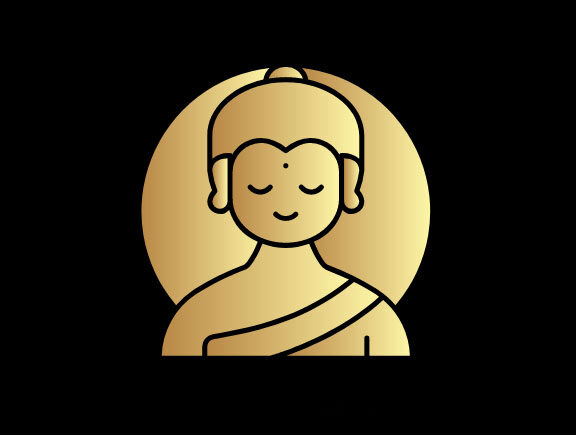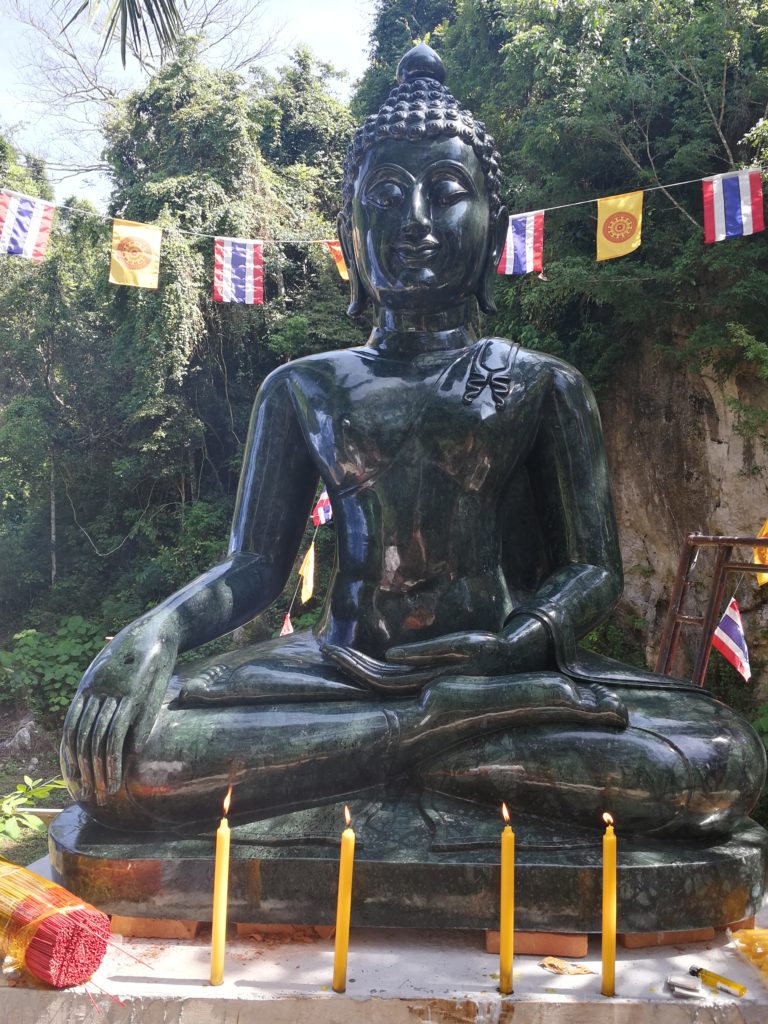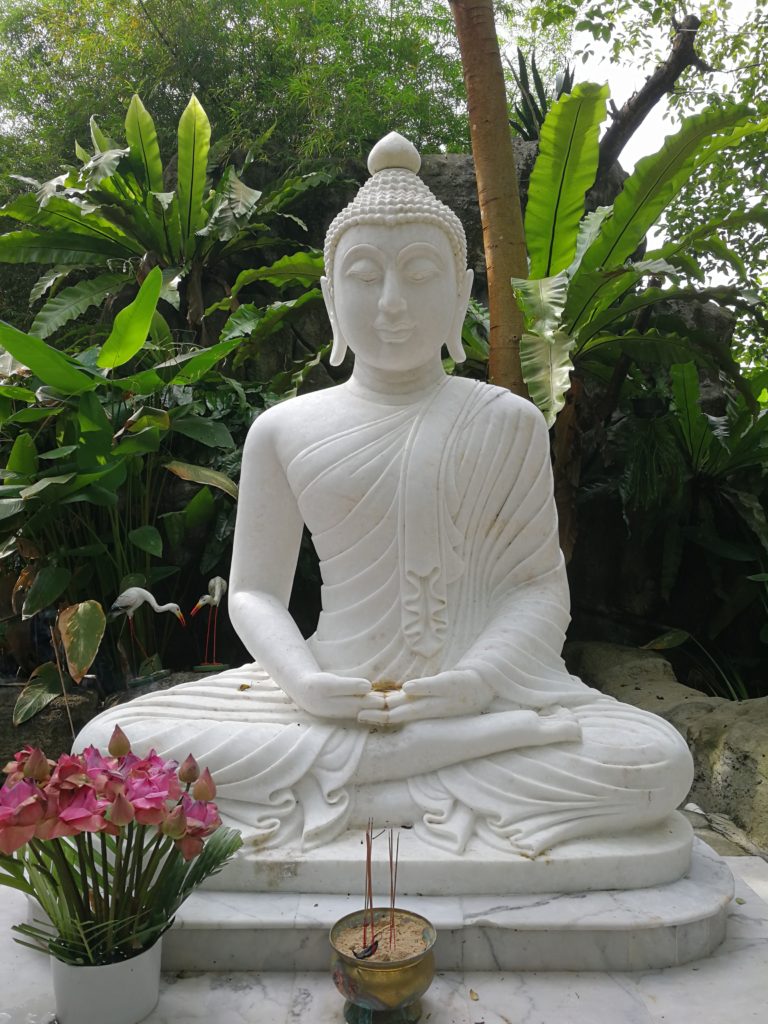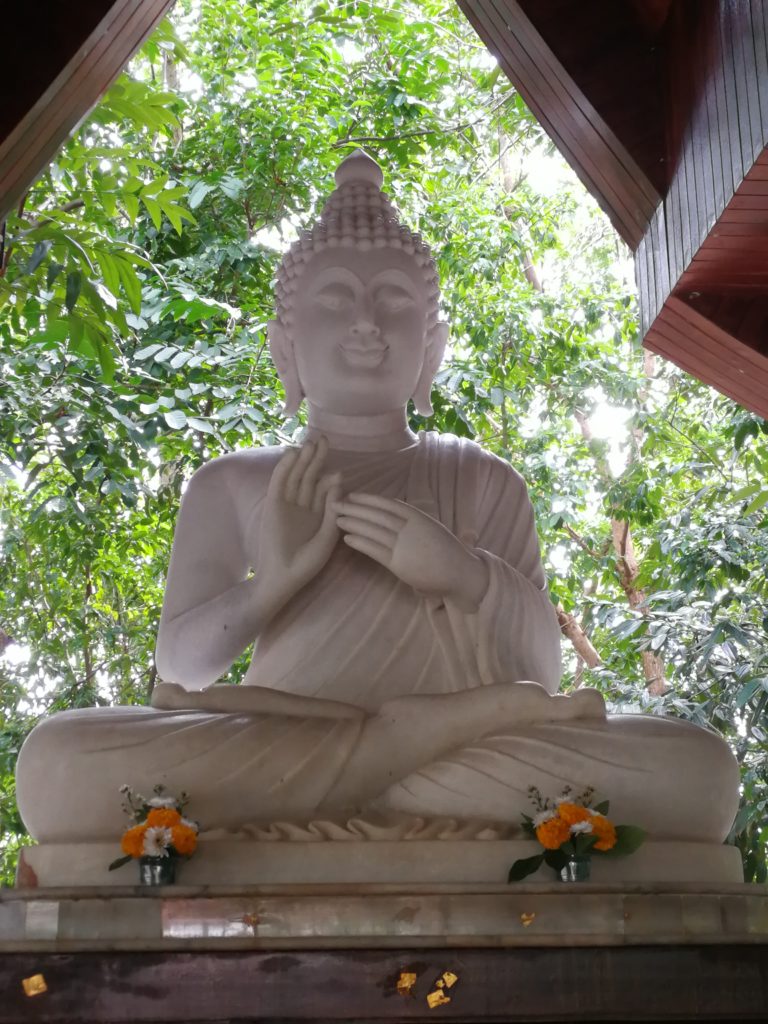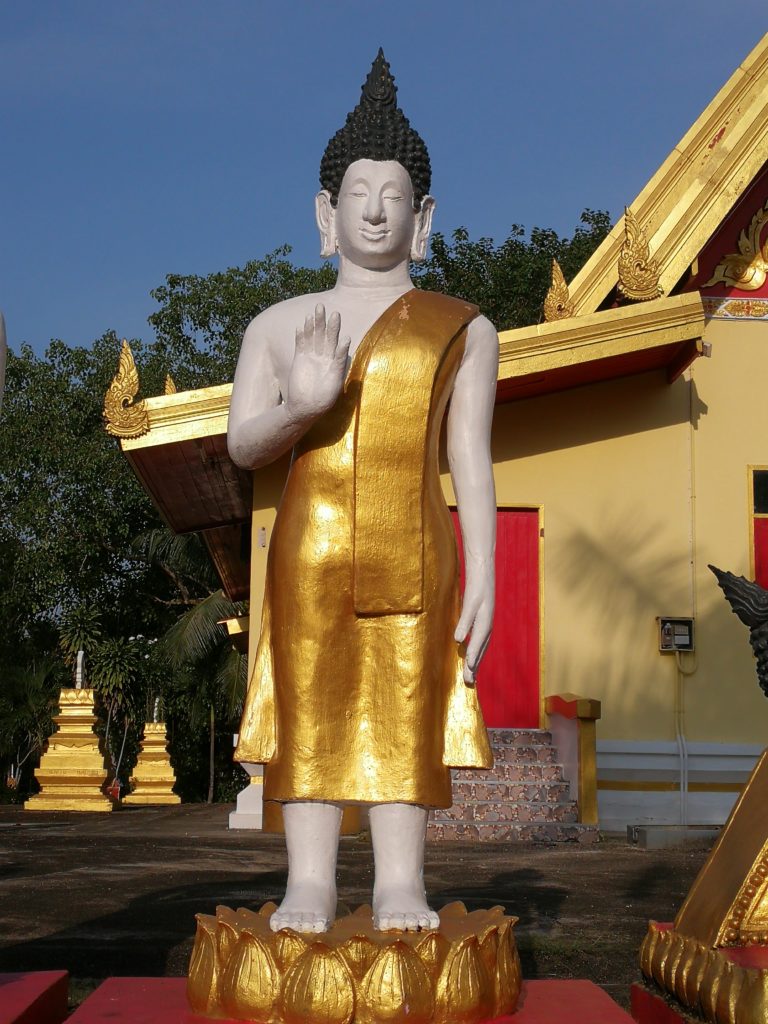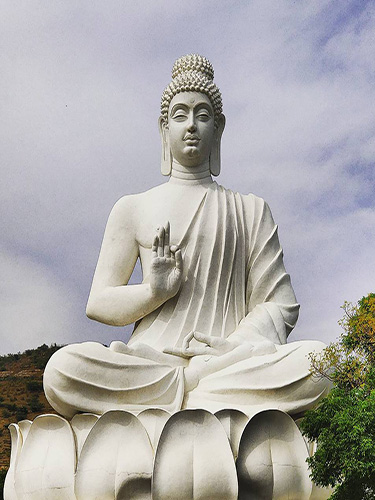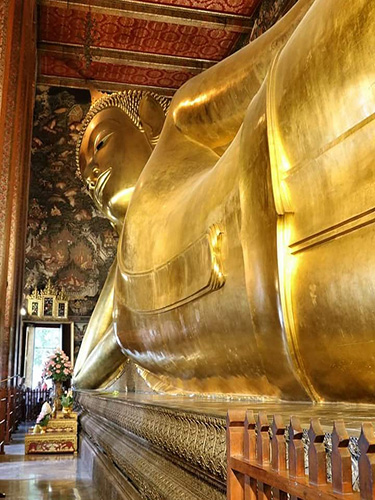Are you curious about the significance of the Buddha hand gestures, also known as Buddha Mudra, and the poses associated with them? Each posture holds great importance that relates to the Buddha’s past lives. Usually, Buddha statues display a specific Mudra with the hand or fingers, while some sculptures depict the Mudra through postural representations, like the Reclining Buddha. Take a look at our Mudra list to explore the different types of postures commonly used.
Bhumisparsha Mudra
What does the Bhumisparsha Mudra signify? This Buddha Mudra, also known as ‘Touching The Earth’ or ‘Subduing Mara,’ is one of the most commonly used hand gestures in Buddha statues across various countries. In this Mudra, the Buddha’s right-hand leans on the knee and points towards the Earth, while the left hand rests on the lap and faces upwards.
Legend has it that while Shakyamuni Buddha was meditating under a Bodhi tree, Mara’s evil hordes attacked him before he attained enlightenment. Shakyamuni Buddha performed the Bhumisparsha Mudra, ‘Subduing Mara,’ and calmly defended himself against the assailants. After this victory, he attained enlightenment and became the Buddha. This posture symbolizes the moment when Shakyamuni Buddha achieved enlightenment.
Dhyana Mudra
What does the Dhyana Mudra signify? This hand gesture has been associated with meditation and concentration since ancient times and is only used while in a seated position. In this Mudra, both hands rest on the lap with the right hand on top of the left. All four fingers are fully extended and rest on top of each other, while both thumbs point diagonally toward each other, forming a triangle that represents the three jewels.
The Dhyana posture was used by Shakyamuni Buddha during his meditation under the Bodhi tree before attaining enlightenment. Other Buddhas, such as Amitabha Buddha and Bhaisajyaguru Buddha (Medicine Buddha), also use this posture in certain representations.
Dharmachakra Mudra
What does the Dharmachakra Mudra signify? It is a unique hand gesture that signifies the ‘Wheel Of Dharma’ in Sanskrit. The Mudra is formed by touching the tip of the thumb and fingers to create a circle. The right hand faces outwards, while the left-hand faces inward and covers it. Holding the hands in front of the chest represents that the teachings come directly from the Buddha’s heart. There are variations of the Mudra, with some Buddha representations depicting the hands touching, separated, or overlapping.
The Dharmachakra posture depicts one of the most notable moments when Shakyamuni Buddha delivered his first sermon in the deer park of Sarnath after attaining enlightenment.
Abhaya Mudra
What does the Abhaya Mudra signify? This hand gesture can be seen in standing, walking, and seated Buddha images and can be made with one or both hands. The hand is held outwards with the palm facing the front, while the other hand hangs down at the side of the body. There are many variations of the Buddha Mudra, particularly in Thailand, where it is prevalent in the “Monday Buddha” and “Walking Buddha” images. The Abhaya Mudra has different meanings, with the Buddha’s image in Thailand, with its right hand raised, symbolizing “fearlessness” and “forbidding relatives to fight.” The image with both hands raised represents “calming the ocean.”
On many difficult occasions, such as facing a raging elephant, halting a river flood, and resolving a familial dispute, the Buddha assumed this posture.
Vitarka Mudra
What does the Vitarka Mudra signify? This gesture represents the discussion and transmission of the teachings of the Buddha. The passing on of knowledge after the Buddha attained enlightenment is symbolized by the Vitarka Mudra. The right hand is placed in front of the chest, and the tip of the thumb and index finger touch to form a circle that represents no beginning or end. The left hand rests on the lap with the palm facing upwards.
The Buddha mudra is believed to represent the transmission of knowledge and wisdom. It is said to symbolize the Buddha’s first sermon, in which he taught the Four Noble Truths and the Eightfold Path to his followers. The gesture is also thought to express the energy of teaching and intellectual discussion, as well as the union of method and wisdom in Buddhist practice.
In addition to its spiritual significance, the Buddha mudra is often considered a symbol of protection, as it is believed to ward off negative energies and promote inner peace and harmony. It is also commonly used in meditation practices to help cultivate focus, concentration, and insight. The Vitarka Mudra has many similarities to the Dharmachakra Mudra, both in its pose and its meaning. These two postures are often used interchangeably and are common gestures seen in Buddha statues from Thailand.
Reclining Buddha
What does the Reclining Buddha signify? The Reclining Buddha is a well-known depiction of Buddha lying down during Mahaparinirvana, which represents his final moment on Earth before entering Nirvana. The Buddha is shown lying on his right-hand side with his palm supporting his head, resting on a pedestal. Despite achieving enlightenment, the Buddha, being human, had to leave his physical form eventually. The Reclining Buddha statues are not meant to evoke sadness in their followers but rather to encourage and inspire them towards enlightenment and liberation from Samsara, the cycle of rebirth.
Many colossal Reclining Buddha statues can be found in Southeast Asia, such as the famous golden Reclining Buddha statue at Wat Pho in Bangkok, measuring 46 meters in length and 15 meters in height, and the 90-meter-long and 20 meters high Buddha at Maha Bodhi Ta Htaung, the Burmese monastery in Monywa. The Buddha is dressed in golden robes and resting on a golden pedestal which depicts its eve of death and entering Nirvana.
Here are a few hand-picked articles for you to read next:
